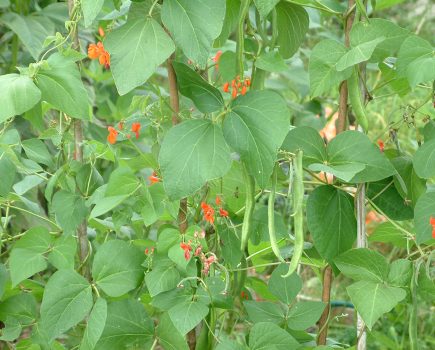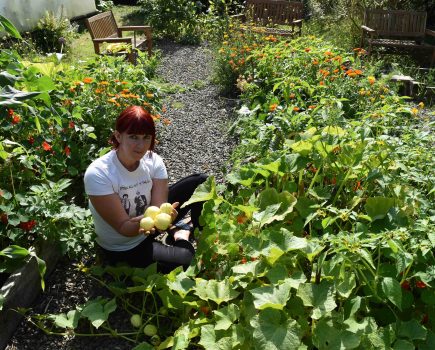APRIL 5, 2009: England’s most familiar landscapes, their wildlife and habitats, will experience wide-ranging changes in the face of climate change, says Natural England, and significant changes to the way we manage our land are needed to allow our natural environment to adapt.
The Climate Change Character Area reports focus on four treasured, and very different, English landscapes: the high fells of the Lake District; the woodland and chalk grassland of the Dorset Downs and Cranborne Chase; the varied, farmed landscape of the Shropshire Hills; and the low-lying wetlands of the Norfolk Broads. The four reports form part of a wider project aiming to help identify local management responses that will better enable the natural environment, and our enjoyment of it, to adapt to changing climate conditions. Dr Helen Phillips, Chief Executive of Natural England, said: “Climate change is the biggest issue facing the natural environment. Our most precious species, habitats and landscapes urgently need to be managed with climate change in mind. By anticipating how particular areas might be affected by climate change, and by developing targeted, local responses – this will be a valuable means for us to understand how the natural environment can adapt to the climate challenges it faces.” The four Character Area reports reveal a wide range of potential effects on biodiversity, landscape, recreational and historic assets. The reports suggest practical actions that would make these areas more resilient to climate change. Key findings from the reports:The Norfolk Broads Because of its coastal nature and generally flat landscape, the habitats of the Norfolk Broads are particularly susceptible to the impacts of climate change: Saline penetration from surrounding sea water will increasingly impact the Broads’ freshwater habitats, making them more brackish and adversely affecting species dependent upon freshwater conditions, such as the bittern, water soldier and many species of fish. Restoring the structure of river channels and adapting dredging depths in rivers would help to moderate saline intrusion, as would raising water levels in the Upper Thurne. Natural floodplain wetlands will be impacted by a repeated cycle of flooding and drought which will lead to changes in many habitats and species. Rare water plants may decline due to increased soil erosion affecting water quality. Improving connectivity between river channels, planting of wet woodland, and restoration of water meadows would help floodplains and wetland habitats function more effectively. Changes in the timing of seasonal events like flowering, breeding and migration may result in the decline of migratory birds such as turtle dove, yellow wagtail and cuckoo. Altered cropping and grazing patterns and extending existing habitats and creating new habitat areas would all have an impact. New wetland areas may need to be created to moderate the flooding of existing wildlife sites. Cumbria High Fells England’s peat soils store around 300 million tonnes of carbon and, like many upland areas, the Cumbria High Fells are a “carbon time bomb” needing to be specifically managed as a future carbon store. Significant amounts of carbon will be emitted if the drier summers and heavier rain expected from climate change are allowed to dry out or erode peat supplies. Improving the condition of all existing upland habitats and water resources is a priority, particularly high carbon ones like blanket bog. Many species in the area are likely to expand their range – the ruddy darter and the hairy dragonfly have been present in Cumbria since 2001 and the heath fritillary butterfly may colonise the area. Garlic mustard and cow parsley will benefit from a warmer environment, although others species will decline, such as the stiff sedge plant, the ice age relic fish the arctic char, and the mountain ringlet butterfly, which faces local extinction. More extreme cycles of wetting and drying may also affect the foundations of walls and historic buildings, iconic features of this region. Shropshire Hills The Shropshire Hills contain an important range of habitat and landscape assets, from dry heaths to oak woodland, from moorland to alder-lined rivers and streams. Climate change is expected to change the mix of species and habitats traditionally found in the area, and affect the timing of seasonal events like flowering, breeding and migration. Migratory birds such as the pied flycatcher, cuckoo and redstart may struggle to adapt to changes in seasonal timing while species associated with cooler conditions at higher altitudes may suffer. Red grouse and the cowberry plant found at Long Mynd and Stiperstones are at the southern edge of their UK range and could face an uncertain future. Salmon, white clawed crayfish (a globally threatened species) and the banded demoiselle damselfly may decline as increased soil erosion affects river quality. Tree species not currently native to this area, like sweet chestnut, sycamore and beech, would be better suited to surviving under changed conditions and may need to be planted in increasing numbers. Dorset Downs and Cranborne Chase By 2080 the climate may resemble that of present day Portugal. Beech trees, common in Dorset and a much-loved feature of the landscape, will decline. At the same time chalk stream networks are likely to contract, leading to a decline in freshwater species such as the Atlantic stream crayfish. Summer droughts may, however, be accompanied by intense winter rain storms leading to increased soil erosion affecting the natural environment and presenting challenges for famous features like the Iron Age hill forts of Maiden Castle and Hambledon Hill. To help the area adapt it will become increasingly important to improve the condition of existing habitats and create new habitat areas. A programme of planting locally native, but drought-tolerant replacements for existing mature trees may well be required. Helen Phillips continued: “The time has come for us to start taking real action to help our most treasured landscapes and wildlife adapt to climate change. This is the first step to creating a national picture to enable us to assess fully the true impact on our natural environment before it’s too late.”







